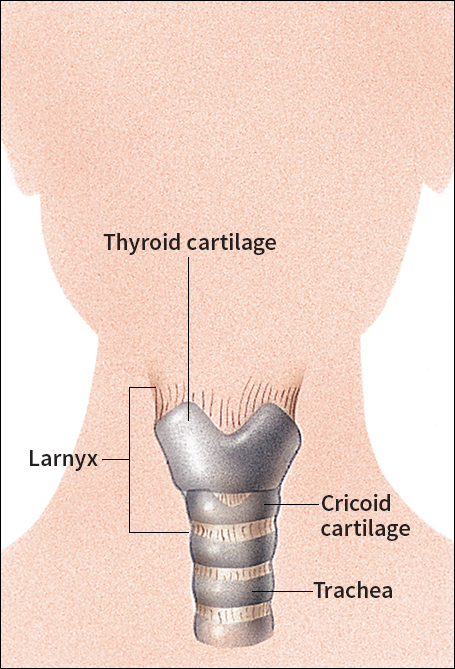Larynx, << LAR ihngks, >> is a section of the air passage in the throat. It is located between the back of the tongue and the trachea (windpipe). The larynx is sometimes called the voice box because it contains the vocal cords. Every breath that passes into and out of the lungs passes through the larynx.
The larynx is shaped like a box, and it has a supporting structure made up of nine sections of cartilage. The thyroid cartilage, in front, and the cricoid cartilage, just below it, are the most important. The thyroid cartilage consists of two wing-shaped plates that meet to form the projection called the Adam’s apple. These plates make up the sides of the larynx. The ring-shaped cricoid cartilage helps form the back wall of the larynx.

Voice production occurs in the space inside the larynx called the glottis. The vocal cords, two folds of elastic tissue, lie along the sides of the glottis. Small muscles in the vocal cords are attached to the glottis wall. These muscles can stretch the vocal cords, change their shape, or bring them close together. When the cords are close together, air rushing between them produces sound. The shape and tension in the cords determines the pitch (highness or lowness) of the voice. The shape of the throat, nose, and mouth determines the quality of a person’s voice.
